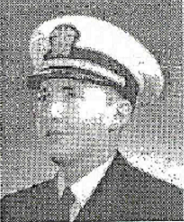MAX (MICHAEL) FISHMAN

By Eddy Kaplansky
Max Fishman was born in Haverhill, Massachusetts and brought up in a traditional Jewish home with Zionist values.
He began his electrical engineering studies in 1939 at Pittsburgh’s Carnegie Institute of Technology. On obtaining his master’s degree, when the U.S.A. was already in the war, he joined the U.S. Navy. Soon after completing an officers’ course, Max saw service in the Pacific Theatre as communications officer on a seaplane refueling tender. After V-day he taught electronics at the U.S. Naval Academy.
Upon his release form the Navy, Max returned to the Carnegie Institute of Technology where he obtained a PhD in electrical engineering in 1948. As an active Zionist, and keenly aware of the grave dangers then facing the nascent Jewish State, he declined offers for work in his field and instead traveled to New York to volunteer for the cause.
For the next few months Max was a busy member of Teddy Kollek’s team in New York, covertly procuring war surplus communication and radar equipment for the nascent Israel Air Force. In November he flew to Israel to be on hand when the first shipment of “his” equipment arrived in Haifa. Max was soon at Har Meron, near Zefat, supervising the installation of an early warning radar station and instructing others in its operation and maintenance.
As technical officer of the IAF’s radar unit, 505 Squadron, Max trained technicians in electronics instrumentation and set up a communications workshop in Sarafand. It was while he was with 505 that he met Zehava Itzhaki, one of the unit’s few Israeli radar operators, whom he married in October 1949. The newlyweds lived for a time at Kibbutz Yagur where Zehava taught school while Max set up the Communication Technicians School at Haifa airbase – his final IAF assignment.
Unable to find work in his field as a civilian, Max and Zehava moved to the U.S.A. in July 1950. At the invitation of the electronic optics firm El-Op (Tasiya Electro Optit), Max and his family moved back to Isrsael in 1970. For the first three years he also taught at the Holon Institute of Technology (later part of the Tel Aviv University). Whilst at El-Op he was twice awarded the coveted Kaplan Prize: The first time for developing a machine that translates regular text to Braille, and later for developing a night-vision sight for the Galil rifle.
Source: American Veterans of Israel Newsletter: Summer 2003

